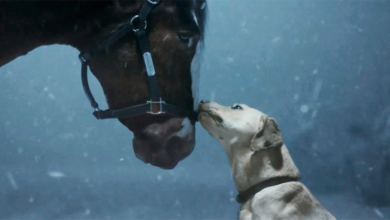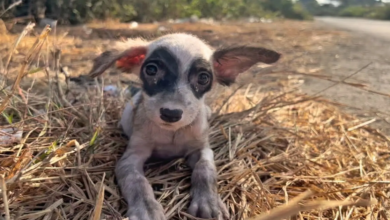Leash Up, Bag Poop, and Stay on Trail When Hiking With Dogs, Experts Say
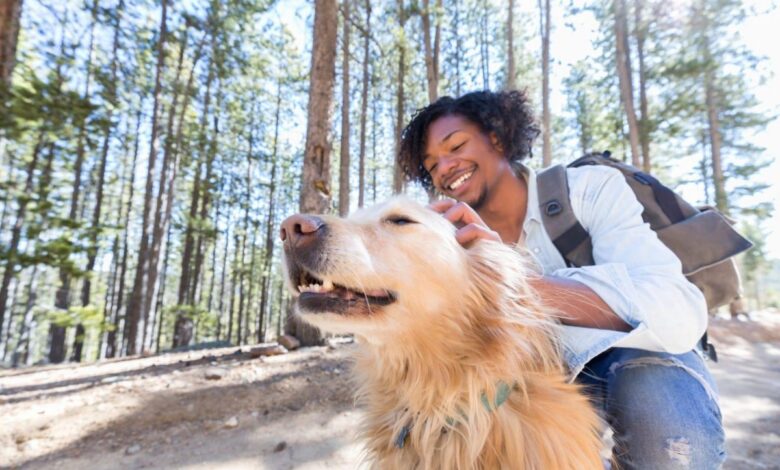
-
- This post contains affiliate links. Read more here.
- Not a substitute for professional veterinary help.
Additional reporting by Gwendolyn Elliott
For many people, there’s nothing more delightful than a happy dog face bounding toward you on a hiking trail, free of worldly cares and the constraints of a leash. For dog lovers, watching a dog be a dog outside—sniffing around, exploring, enjoying quality time with the rest of their pack—is a welcome encounter.
But not everyone feels this way, especially on hiking trails. There are some very good reasons for this: some people are afraid of dogs and prefer to avoid them as much as they can; younger hikers and the differently abled are more prone to injury from overly excited, unleashed dogs; others simply want to enjoy a hike without having to maneuver around free-range pets at every turn on the trail.
Unleashed dogs, however, are surprisingly common on hiking trails across the nation, as is another common gripe: the proliferation of dog poop, in bags and unbagged piles, dotting the trail in significant quantities.
So, what does good trail pet etiquette (pet-iquette?) look like on trails? How can we all share the trail, and responsibly enjoy a hike with our pups? We spoke to pet owners for their take, and to the experts for their tips.
Why Do Dogs Eat Poop?!
Bog poop. It’s gross. It’s probably the crappiest (pun intended) part about being a dog owner. We don’t want to go near it, let alone pick it up. So, it’s totally expected to be freaked out and grossed out when you see your precious pup sniffing and sometimes EATING his own poop – or even worse, another animal’s poop. Why’s he doing it!? Let’s dive into what’s making your pooch eat poop, come in here calmingdog.com.
Leash Up: It’s a Courtesy (and Usually, the Rule)
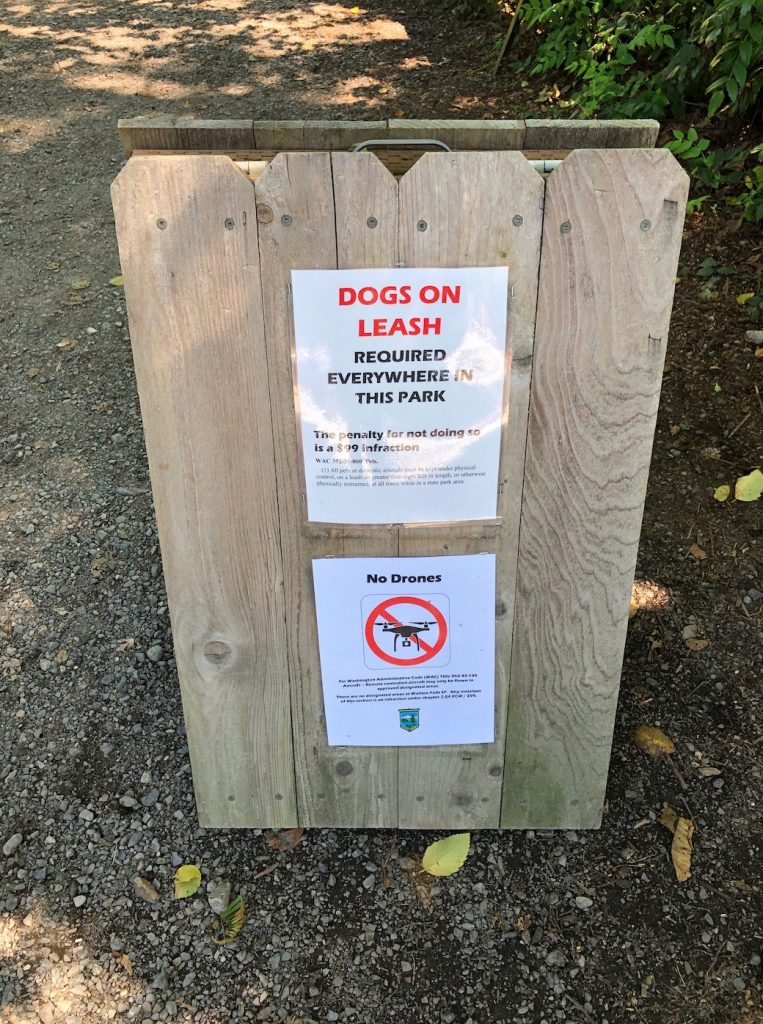
Dogs are required to be on leash at state parks such as Wallace Falls State Park in Gold Bar, Washington. Photo by Gwendolyn Elliott.
On the majority of hiking trails across the nation, dogs, when they are allowed, are only permitted on leash. These regulations are usually posted near or at the beginning of a trailhead, and are generally highly visible. However, hikers often complain that dog owners aren’t complying.
Take dog owner Tanja H., for example, who was walking her 3-pound Chihuahua and 5-pound Min Pin on a neighborhood trail last summer near her home in Lake Tahoe, California. Her dogs were on a 6-foot leash, with another foot-long attachment allowing them to walk next to each other from the same handle strap. As dogs do, they stopped to smell the ground new every few steps, yanking one another from side to side. Suddenly, Tanja looked up to see a large Golden Retriever bounding toward her, tail wagging, eyes locked on her dogs.
On the majority of hiking trails across the nation, dogs, when they are allowed, are only permitted on leash.
Tanja remembers the dog was just being curious and friendly. But it was off-leash, and Tanja’s dogs weren’t as excited to make an introduction. She pulled the leash behind her to try to keep her dogs back, and with her other arm, began to try push the incoming dog away. By the time the owner, about 20 feet behind, caught up with his dog, Tanja’s arm was twisted and her shoulder dislocated as she was trying to wrangle the Golden away.
Tanja has a genetic disorder called Ehlers-Danlos syndrome that makes her connective tissues especially fragile and found herself nursing the injury for several weeks afterward—not the kind of outcome most folks would expect after a casual hike with the pups on a neighborhood trail.
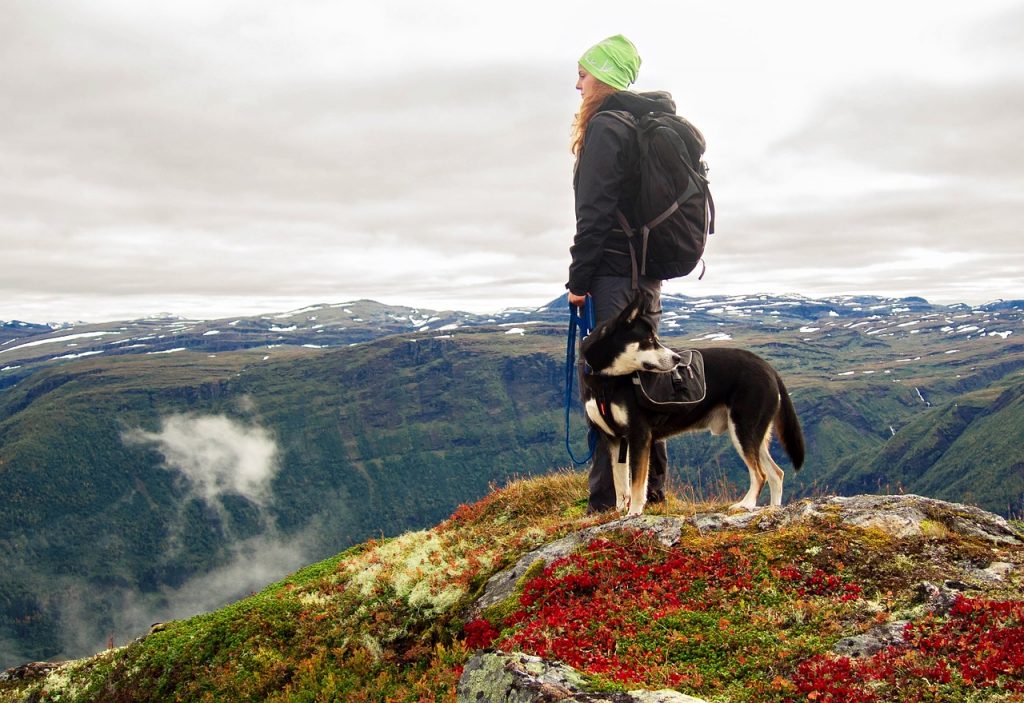
Image by 2999607/Pixabay
Who Let the Dogs Out?
In 2019, in Rover’s home state of Washington, Washington State Parks issued 154 violations to pet owners, many of which included violations of off-leash rules (others included dog bite reports on trails, either dog to dog or dog to human).
This sounds about right to Meghan Young, founder of a 40,000-member Facebook group for women hikers in the northwest called PNW Outdoor Women (PNWOW). Occasionally, a member will post about hiking with their dog; it inevitably leads to a heated slew of responses. “It always amazes me how we can have so many calm conversations about [hiking] but when it comes to dogs, it’s like, nope.”
It always amazes me how we can have so many calm conversations about hiking but when it comes to dogs, it’s like, nope.
There are a few reasons people get defensive about hiking with their dogs, unleashed, or otherwise, Young says. One is that for so many people, pets feel like family. When their dog’s behavior comes under scrutiny, it can feel as though their parenting technique has, too. And, of course, no one likes being told what to do.
What’s more, it’s easy to understand why some owners let their dogs off leash on trails where it is prohibited. Dogs tend to pull and stop frequently, which is especially taxing when slogging uphill, and more like walking with a distracted toddler. Many pet parents also feel their pet is the exception to the rule, as a handful of commenters in this Reddit thread claim their dogs to be.
And, while the behavior may not be malicious, the person who started the Reddit thread, user estrellaj, seems to sum up the reasons many people let their dogs off leash on a hiking trail: “I love my dogs like crazy and I don’t want them falling off a cliff or eating poison mushrooms but I also want them to enjoy the hike, sniff around, investigate things, be a dog!”
Free-Roaming Dogs Restrict Access for Other Hikers
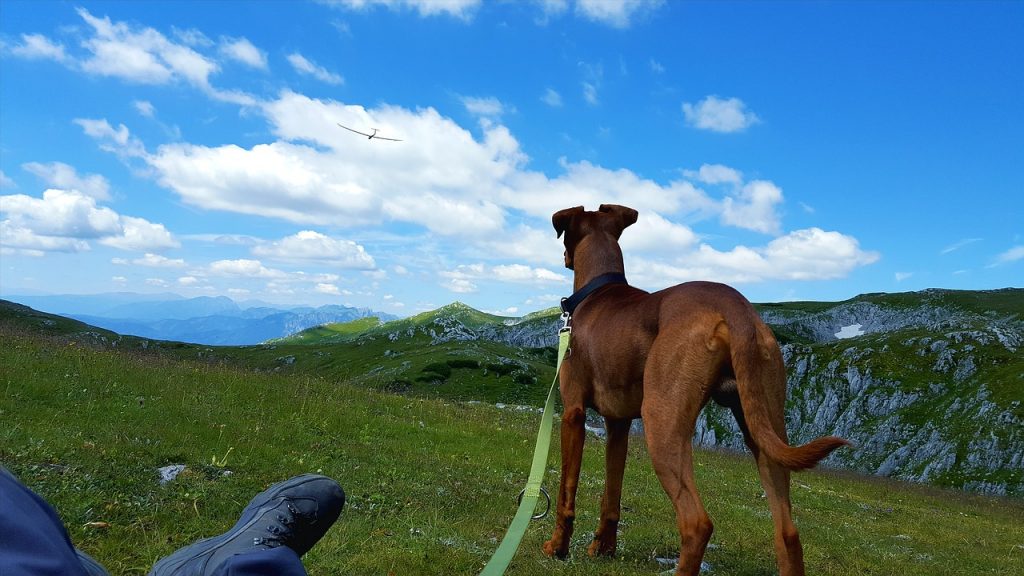
Image by Michael Pinter/Pixabay
For Denaya Shorter, a former wildlife biologist for the National Forest Service, Walker Fellow for the National Audubon Society, and author of this terrific article about hiking with dogs, off-leash dogs go beyond just being a nuisance.
Shorter, who is now the community engagement program director at the Ecology Center in Berkeley, California, works to introduce traditionally underrepresented communities in the outdoors to the joys of hiking and being outside.
“The experiences I often have in this work are with someone who has never hiked before, someone who is being introduced to hiking on trails and being introduced to these spaces for the very first time. And then, coming around the corner, there’s a dog running at them. You know, that creates a negative experience for that person, and if their first experience out on the trail is a negative one, we risk that person never wanting to come out again because of that.
Even if your dog is the nicest, sweetest, friendliest dog in the world, for someone who is fearful of dogs or has had negative experiences with dogs, they don’t care about any of that.
“Even if your dog is the nicest, sweetest, friendliest dog in the world, for someone who is fearful of dogs or has had negative experiences with dogs, they don’t care about any of that. It’s not enjoyable or pleasant for them to walk around on a trail where they are expecting to be able to, you know, freely walk and explore, and then have a dog unexpectedly run up on them.”
Dogs Impact More Than People on Trails
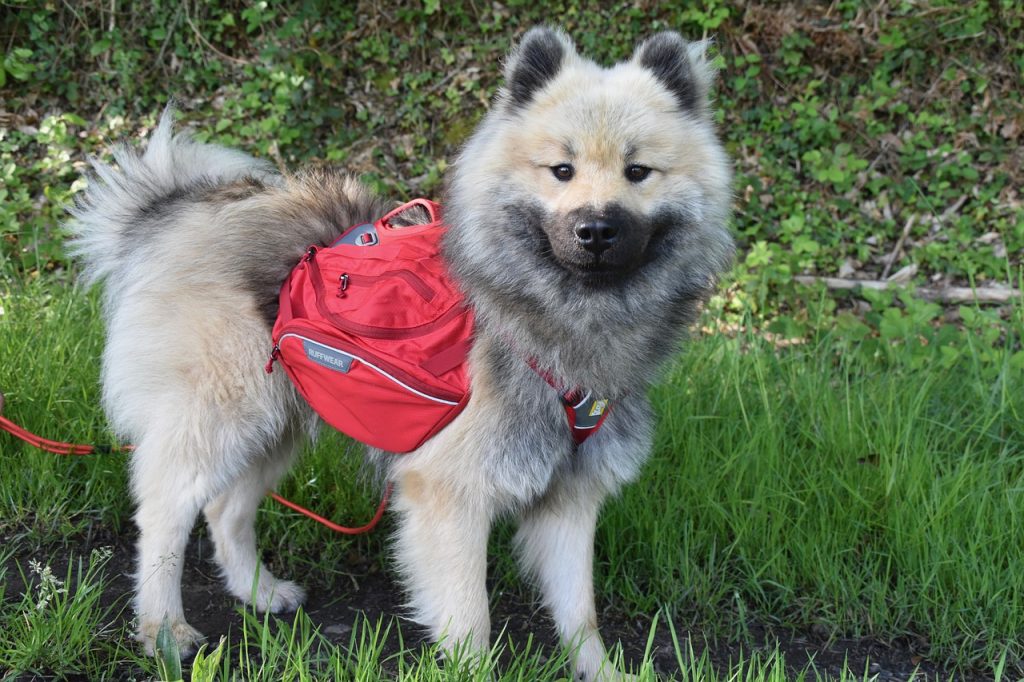
Image by JacLou DL/Pixabay
Dogs, off-leash or otherwise, also have a measurable impact on wildlife and water quality. Lori Hennings is a senior natural resource scientist for the parks and nature department at Oregon Metro, which manages natural areas in the greater Portland area. As a wildlife biologist, she’s particularly interested in how dogs affect the green spaces that have been set aside in the city, like conservation areas and Portland’s crown jewel, Forest Park. She’s also a dog owner who loves hiking with her 97-pound Labrador.
Dogs are the single biggest factor that drive wild animals away from their habitat along the trail.
It turns out there are few things you can do on a trail that are more disruptive to wildlife than bringing a dog. In 2016, Hennings conducted a literature review of 77 studies on dogs in recreation areas. One 2008 study published in the Natural Areas Journal found that deer doubled their distance from trails that allowed dogs (versus just humans), and also drove smaller animals like squirrels, rabbits, and prairie dogs away. A 2006 study published in Biological Conservation suggested that bobcats not only stay further away, but also shift their movements to nighttime in order to avoid dogs.
Compared to walkers, joggers, and mountain bikers, dogs were the single biggest factor that drove wild animals away from the trail, Hennings told me. The effects are worst with off-leash dogs. “Even I wouldn’t say keep dogs out of all natural areas, because I have a dog and I want to take him to natural areas,” she says. “But that does harm, and I recognize that.”
The Trail to the Top Is Paved With Poop
And then there’s all that dog poop. Dog owners seem to have different methods of dealing with waste when they’re hiking. In the small, informal poll I conducted with friends, there was an even split in poop-management methods. One group of folks bagged the poop and then left it on the trail with the intention of picking it up and and putting it in the trash on the way back; another picked up the poop and carried it with them the whole hike.
Lauren G., who hikes in Arizona, says she bags her dog’s poop and leaves it on the side of the trail, but always picks it up on the way back, along with any other dog bags she sees—to pay it forward in case she misses one of her own. “It’s just easier than carrying it because I usually have a day pack and nowhere to put it,” she says.
Some ways of dealing with dog poop on trail are vastly better than others.
Reddit user eatyourspinach put it more bluntly: “If a dog craps half a mile in, I’m not carrying a bag of s*** for 5.5 miles when I can just pick it up on my way back and carry it .5 miles.”
However, an anonymous Rover staffer admits that those bags can be hard to find on the way back. “I was once that person who hid a poop bag on the trail—out of sight, but where I thought I would be able to find it again—and then on my way back down, I paced for like 10 minutes where I was certain it was, but couldn’t find it.”
A few people had other methods of dealing with the doo: flicking the poop to the side, believing it would do no more harm than the rest of the animals pooping in the woods, or burying it. Of anything you could do, flicking it is probably the worst.
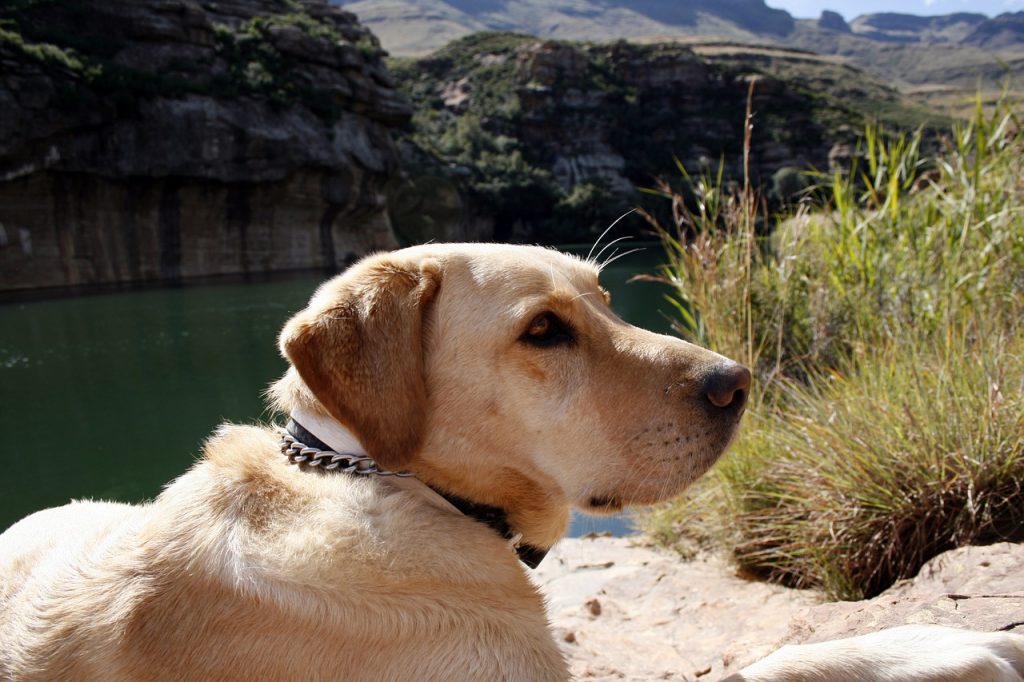
Image by Sandra Petersen/Pixabay
“It doesn’t take much dog poo getting into the water to really pollute it,” Hennings says. E. coli is particularly harmful for human health and dogs can be carriers. In fact, 13% of the non-pathogenic E. coli found in the Tualatin Basin in Oregon was DNA-linked back to dog waste according to Clean Water Services. A similar percentage (14%) was blamed on dogs in Idaho’s Lower Boise River, and 11% was linked to dogs near Puyallup, WA. Other municipalities such as L.A., Chicago, and Seattle have long struggled with keeping dog poo out of the water supply.
Municipalities such as L.A., Chicago, and Seattle have long struggled with keeping dog poo out of the water supply.
Dog waste also has nutrients that can promote algae blooms and reduce oxygen for the creatures living in the water, Hennings adds. And before you think that flicking when there’s not a water source nearby is less harmful, think again. “Everything gets into the stream eventually,” she says.
On a two-week backpacking trip where carrying your dog’s waste is unfeasible, Hennings says burying it six to eight inches underground, and away from any noticeable water source, is OK. But any trip shorter than that, the poop should be carried out. Imagine if every dog owner stopped to dig a six-by-six inch hole (the appropriate size according to Leave No Trace) for every dog poop—there would be more cat holes than trail-side trees.
Some of my hiking friends mentioned cleaning up any bags they saw on the way out, as a way of paying it forward in case they missed one of their dog’s own bags. But if you forget to clean up a bag and another benevolent hiker doesn’t grab it, you’re essentially back in a worst-case scenario—eventually, something will chew through or tear the bag, giving the poop direct access to the ground to spread possible disease. You’ve also added plastic to the mix. (Don’t pat yourself on the back for biodegradable dog bags, either, since many of them don’t break down quickly, or at all.)
The Top 3 Things to Do to When Hiking With Dogs
Hennings said if she could implore people to follow a few simple rules, it would be these. And they’re going to look familiar—they’re the rules most trails require of dog owners.
1. Keep your dog on leash: This helps to minimize the disruption to wild animals and gives you control over your dog in the presence of other hikers.
2. Keep your dog on trail: Like humans, dogs going off-trail can damage local flora and cause erosion, Hennings says.
3. Bag your dog’s waste and put it in the trash: The most respectful and ecologically sound method is to bag dog poop immediately and carry it with you. While that might sound less than desirable, a smell-resistant container like an old Pringles can, or letting your dog carry it out in her own backpack, can make things a lot more pleasant. You can also get a specially designed, odor-concealing bag or pouch that will pack out your load securely and responsibly. (We love Ruffwear’s ingenious pack-out bag.)
Be Respectful and Follow the Rules
“I would reiterate to dog owners, as much as possible, to just do the research on where they’re taking their dogs, because someone has already done all of the work and has determined what’s best for the dog and for the environment that you’re going to hike in,” Shorter says.
“For those dog owners who do want their dogs to be able to experience the outdoors off-leash, there are plenty of places where that is allowed, and that is permitted. And it’s just locating the places and following those guidelines!”
More Resources on Hiking With Dogs
Here’s what other hiking experts say about dog etiquette on trail.
REI: Hiking and Backpacking With Dogs
Washington Trail Association: Hiking With Dogs
American Kennel Club (AKC): Tips for Hiking With Your Dog
American Hiking Society: Hiking with Dogs
Adirondack Council: Tips for Leave No Trace Hiking With Dogs
